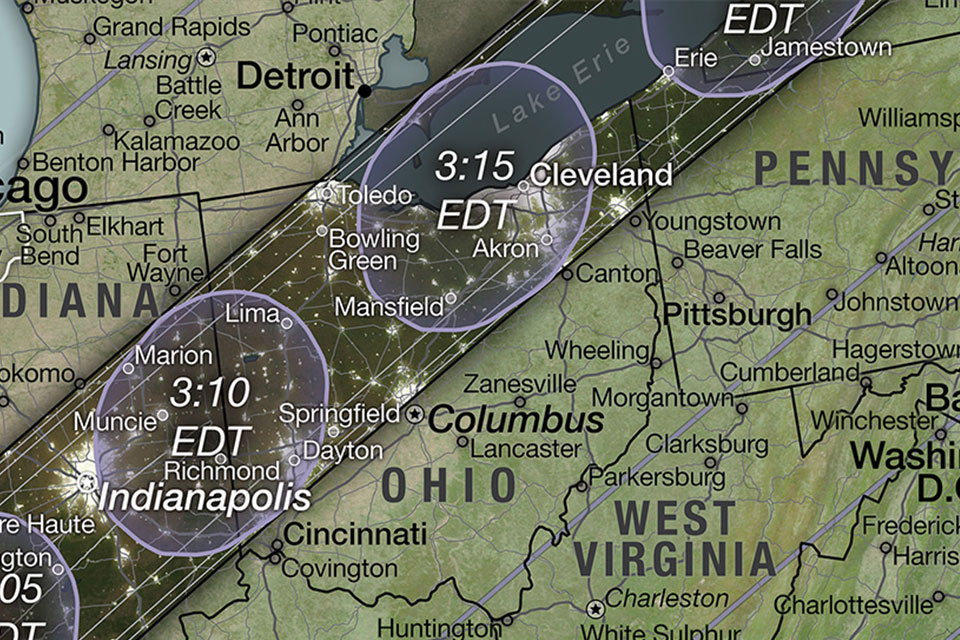Travel
Where and How to Witness the Total Solar Eclipse in Ohio
A huge swath of our state will have an incredible view of the total solar eclipse on April 8, 2024, as a 124-mile-wide band of totality stretches across Ohio. It won’t happen again until 2099.
Related Articles

13 Ways to Enjoy Fall in Grove City, Ohio
From a pizza trek and wing festival to an expansive paintball park and historic gardens, this Columbus suburb offers a variety of adventures. READ MORE >>

10 Ohio Road Trips to Take This Year
From our state’s only national park to museums dedicated to legendary women to incredible roadside art, these treks offer plenty of ways to make new memories. READ MORE >>

Celebrate Legendary Women at These 5 Ohio Museums
Visit these sites that honor individuals who left an indelible mark on history, from a pioneering suffragist to a famous sharpshooter to a literary icon. READ MORE >>


.jpg?sfvrsn=5da6bb38_4&w=960&auto=compress%2cformat)

